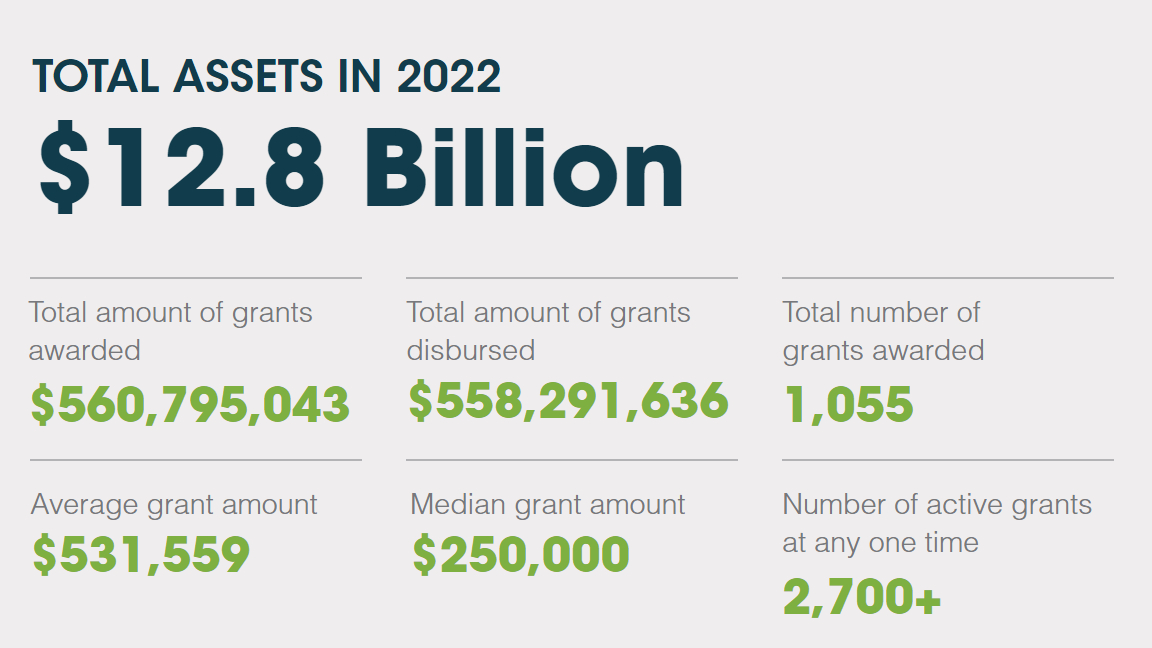What does the Hewlett Foundation focus on in its grantmaking?
We make grants across a number of program areas, many of which we have supported for decades. Globally — including in the U.S. — we make grants to advance gender equity and governance and to reduce the growing threat of climate change. Our U.S. efforts prioritize strengthening democracy, advancing education for all, and supporting community-led conservation in the North American West. Locally, we make grants to support meaningful artistic experiences in communities across the Bay Area and support regional foundations working on critical issues such as housing.
We also address emerging challenges through time-limited initiatives, such as our current effort to reimagine capitalism and foster a “new common sense” about how the economy works and serves society’s aims. Across all of our programs, we invest in advancing racial justice and in strengthening the effectiveness of philanthropy itself.
Learn more about our programs and initiatives.
How does the foundation determine what organizations to support?

We fund organizations working in areas that align with the goals and strategies of our programs and initiatives. Most of our grants are awarded to organizations identified by the foundation.
From time to time, the foundation invites letters of inquiry and other types of proposals through open processes. Recent examples include our Hewlett 50 Arts Commissions and a request for proposals related to addressing climate change problems associated with passive asset management. To be informed when those opportunities arise, please sign up for our email updates and follow us on LinkedIn. Outside of these opportunities, the foundation generally does not accept unsolicited letters of inquiry.
Do your programs ever collaborate on grants?
Although our programs pursue specific, individual strategies, from time to time they do collaborate on a grant when its purpose is applicable to both programs. Programs also sometimes make grants collaboratively with Special Projects when unexpected opportunities arise that are important for advancing their mission, but outside their budget for the year or only tangentially related to their defined strategies. In addition, our Organizational Effectiveness grantmaking is intended specifically to support the work of grantees of our other programs and initiatives. For these reasons, some grants are listed under multiple programs and strategies across our website. If you have questions about grants data, please contact us.
Does the foundation provide scholarships?
The foundation does not fund individuals, scholarships, unincorporated associations or groups. Moreover, the foundation’s funds can be used only for purposes that are consistent with its status as a nonpartisan, charitable organization. For example, we do not fund political candidates or political action committees.
Do you make program-related investments (PRIs)?
We focus on creating social benefit through our grants and related philanthropic activities, and generally do not make program-related investments—that is, financial instruments, such as loans, guarantees, and equity investments, designed to support charitable purposes that qualify toward a foundation’s five percent payout requirement. Our social investment policy provides more details.
Can grants be made to a fiscal sponsor?
Yes, the foundation permits organizations to use fiscal sponsors.
Can grantees provide feedback to the foundation?
Grantees are welcome to provide comments directly to program staff or by emailing granteefeedback@hewlett.org about any aspect of our grantmaking process. Grantees can also submit comments anonymously through a third-party website. Responses are collected and relayed back to the foundation without any identifying information.
What is the foundation’s policy on indirect costs for grantees?
The Hewlett Foundation is committed to working with grantees in a collaborative fashion—treating them as partners and seeking to facilitate rather than dictate what they do. As part of that commitment, we provide long-term, general operating support whenever possible and fund grantees’ true costs when making restricted project or program grants. We do not employ a fixed minimum or maximum rate for indirect costs. When proposals require grantees to submit budgets with indirect cost estimates, we want the proposals to reflect the prospective grantees’ actual indirect costs for the project or program in question.
We recognize that every grant has a unique purpose and structure and that costs vary depending on many factors. We set each grant’s total amount in the context of our overall grantmaking budget and funding priorities, and through a consultative process with the grantee. As part of that process, we intend for grantees to take the lead in determining how best to allocate those grant dollars to direct and indirect costs. For more information and guidelines for specific types of organizations, read our full policy on indirect costs for project and program grants.
What does the foundation know about the demographic makeup of its grantees?
For the past few years, the foundation has been collecting and analyzing U.S. grantee demographic data to improve our grantmaking practices and advance our commitment to diversity, equity, and inclusion. Find out more about what we’ve learned from the data and what we’re doing. As part of our commitment to openness, learning, and transparency, we partnered with the Center for Effective Philanthropy (CEP) on a data platform that makes our grantee demographic data publicly available. Learn more about the platform and explore the data.
